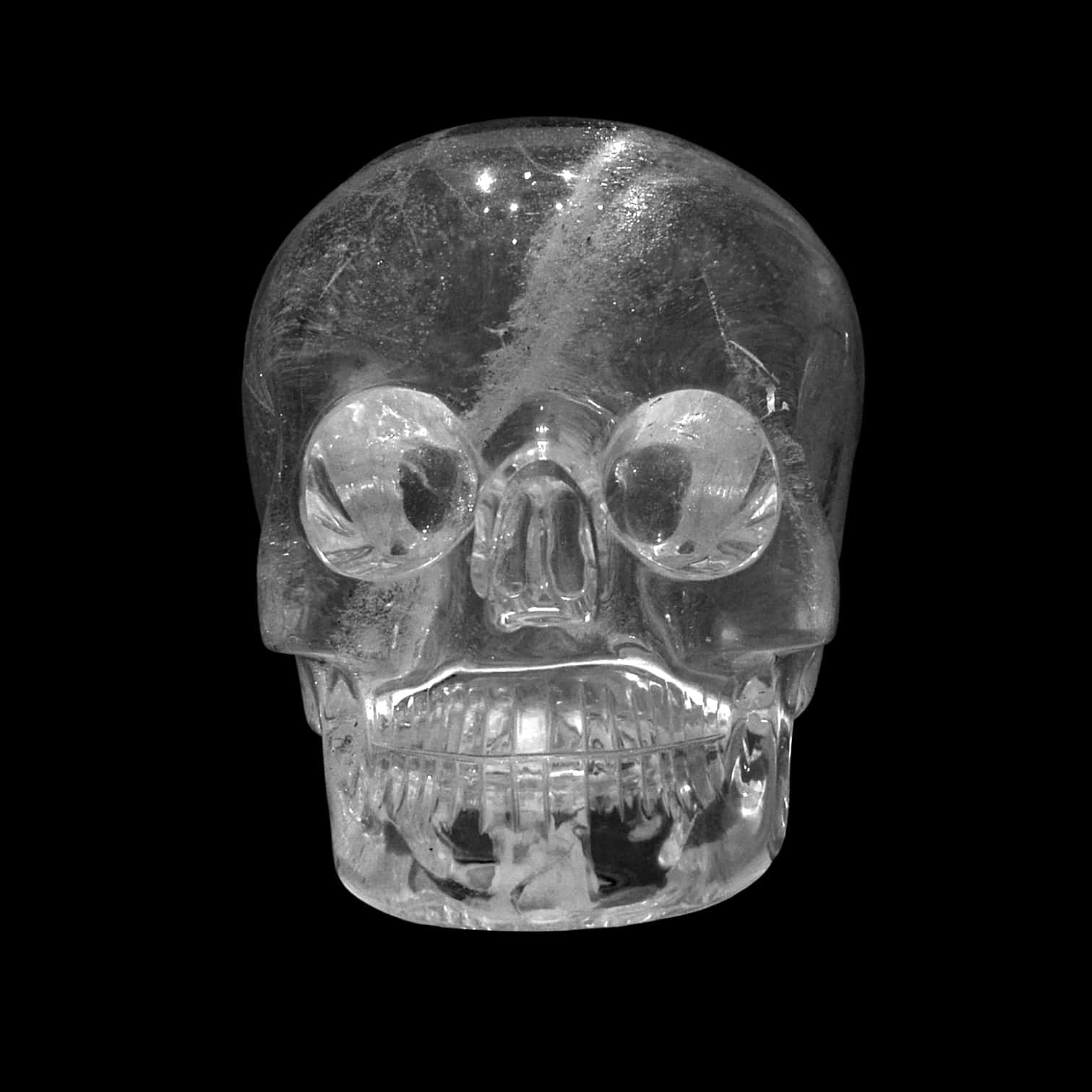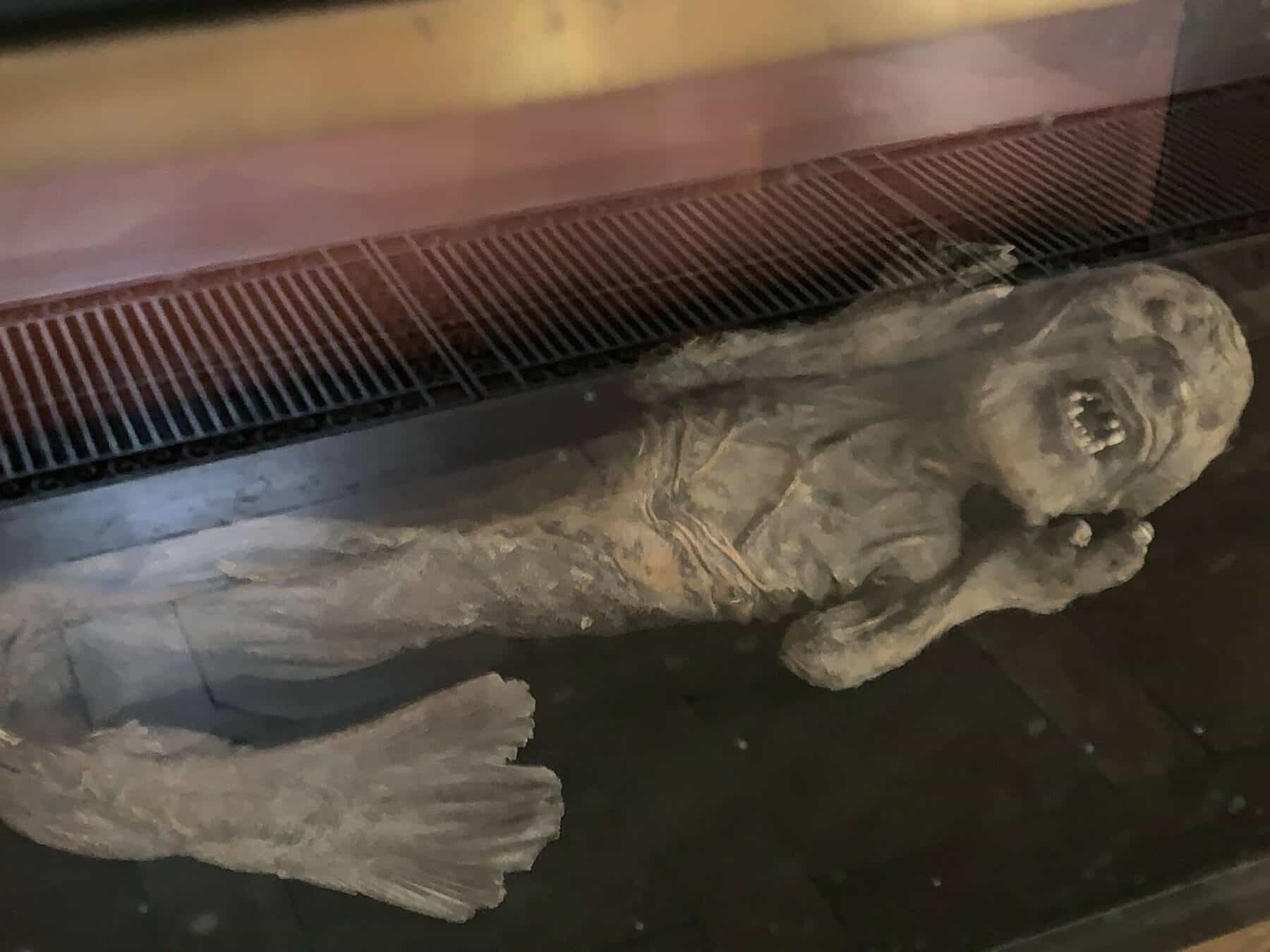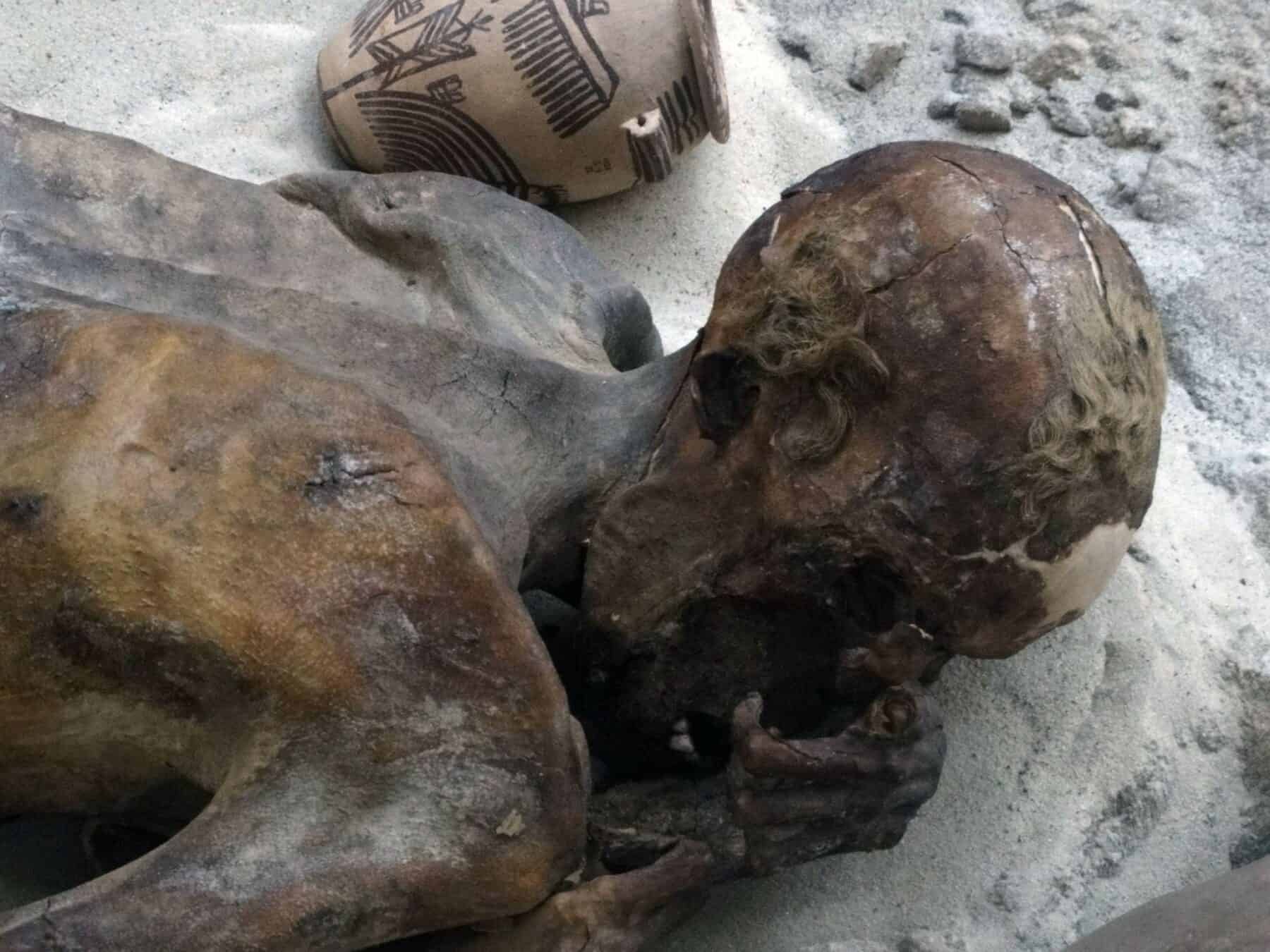Taking a tour of the British Museum is one of the most famous things to do in London.
Home to more than eight million objects, (though not all on display) the collection is huge!
Many people head straight for the Rosetta Stone or the Parthenon Sculptures. But what about the pieces that are a bit… weirder?
If you like oddities, strange objects, and the macabre, this is the post for you.
Read our other posts on the British Museum.
Here’s a brief rundown of the tour.
Crystal Skull
Let’s start in Room 24 with this striking Crystal Skull, which the British Museum purchased from Tiffany of New York in the late 19th century.
The museum (and many others) hyped it up as a genuine pre-Hispanic Mexican skull created for rituals and magic.
It became a popular item to visit, and crystal skulls inspired many myths (and pop culture).

But today, we know a secret. It’s a fake!
Using technology and subject matter expertise, this skull has been determined to be a fake, created in the mid-19th century in Germany.
Both the British Museum and the Smithsonian have analysed these skulls with electron microscopes - they are fakes.
However, they are still entertaining - and museums and circuses share more in common than you might think.
The FeeJee Mermaid
Let’s head to the Enlightenment Gallery for another object with suspicious origins.
The British Museum’s FeeJee Mermaid is just one of many around the world, held in circus sideshow collections and museums.
In fact, the first famous FeeJee Mermaid was displayed by legendary circus man, PT Barnum, in his American Museum.

Based loosely on the Ningyo of Japanese folklore, this mermaid and others like it are made of fish’s tails sewn onto wood and decorated with scales and real teeth.
Though it is another fake, the Museum keeps it here to illustrate the nature of collecting in the Enlightenment era.
John Dee’s Magical Discs
Head to another case in the Enlightenment Gallery to have a look at magical discs belonging to Dr John Dee.
He was a leading intellectual in the Elizabethan court in the mid-16th century.
He and his colleague Edward Kelly created these wax discs, crystal ball, and obsidian stone mirror to contact angels and the dead.
The wax discs were meant to anchor a Holy Table, which he and Kelley would have used for scrying or fortune-telling.
On every disc are characters from the Sigillum Dei, or the Sigil of God.
He and Kelley deciphered a language called Enochian, which he believed was an angelic language.
They planned to hold an elaborate ritual, but they had a falling out before it could happen.
The objects are the focus of a lot of lore and superstition - what do you think?
Banksy’s Peckham Rock
(*no longer on display)
Back in 2005, anonymous street artist Banksy didn’t steal from the British Museum - he snuck something in.
He (or a helper) sneakily installed a piece called Peckham Rock on the wall of the Roman Britain Gallery.
It blended in so well that it was left there for THREE DAYS. It even had an official (fake) museum label!
The label said:
“This finely preserved example of primitive art dates from the Post-Catatonic era and is thought to depict early man venturing towards the out-of-town hunting grounds. The artist responsible is known to have created a substantial body of work across the South East of England under the moniker Banksymus Maximus but little else is known about him. Most art of this type has unfortunately not survived. The majority is destroyed by zealous municipal officials who fail to recognize the artistic merit and historical value of daubing on walls.”
It wasn’t caught until the museum staff saw it listed on Banksy’s website. While they soon took it down, they did put it back on display for an exhibit called “I Object.”
The most important question is - who is Banksy?
Learn more about him on this virtual London street art tour.
The “Cleopatra” Propaganda Lamp
This terracotta oil lamp dates to 35 BCE, and it is a lot more than meets the eye.
It’s a pretty spicy object - and offensive, especially to Cleopatra and her supporters.
It shows a crocodile, which symbolised Egypt. Instead of a tail, the croc has a large phallus. Sitting right on top?
It’s Cleopatra - and it’s not a compliment.

This was likely created as part of a propaganda campaign levelled against her and Mark Antony by Octavian (who would become Emperor Augustus).
Rome was awash with gossip about their supposedly debauched way of life, and so this was meant to show that Octavian was the moral alternative.
It worked - Cleopatra’s reputation was destroyed by rumours and propaganda like this.
Mummified Animals
Fight the crowds into Room 62 - Egyptian Mummies. But for now, let’s focus on the animals!
These are just a scant few of the millions of mummified Egyptian animals. Cats, dogs, monkeys, birds, gazelles, and so many more.
Cats were thought to be good offerings to various gods (especially cat Goddess Bastet) and some animals were meant to serve as food in the afterlife.

These cat mummies date to around 30 BCE, and were found at the funerary complex at Saqqara.
While earlier animal offerings were made of bronze, it became cheaper to mummify real animals by this era.
There are literally tens of millions of cat mummies at this site.
In fact, they were so plentiful, that they were brought to Liverpool and used to fertilise fields in the 19th century!
Gebelein Man - Ancient Egyptian True Crime?
Now make your way to Room 65.
The Gebelein man is a naturally preserved mummy - he wasn’t mummified intentionally but was instead preserved by the heat and dry conditions.
He likely died around 3500 BCE in Upper Egypt at Gebelein.
You’ll sometimes hear him called Ginger because of the colour of his hair.
In September 2012, curators carefully took him to the Cromwell Hospital in London.
Using the latest CT scan technology, they created detailed images and high resolution X-rays.
For the first time, archaeologists and pathologists could perform a digital autopsy on his body to learn more about his life and death.
And they uncovered quite a scandal! The Gabelein Man was murdered when he was 18 - 21 years old.
He was stabbed in the back and had severe damage to his shoulder and rib.
Corpse Medicine - Eating Mummies
We are back where we started - Room 1, The Enlightenment Gallery, and have a look at the Mummy’s coffin perched just above the FeeJee Mermaid.
It’s an empty coffin, of which there are many in the museum.
What happened to many of the mummies that were inside the coffins? We ate them.

It’s true! From the Middle Ages through to the early 20th century, we crushed up mummies and used them for paints, tinctures, and medicines.
Egyptian tomb raiders sold many mummies to Europeans for this practice, and many more fake mummies were made to fill the demand.
This was the same era when we were judging other cultures with cannibalistic practices and calling them savages!
British Museum Tours can be strange and unexpected!
There you have it - just a few of the strangest objects in the British Museums.
Watch the video above for even more details, or get in touch to book your own tour of the British Museum.
And you can read even more about the strangest things in the British Museum here.










